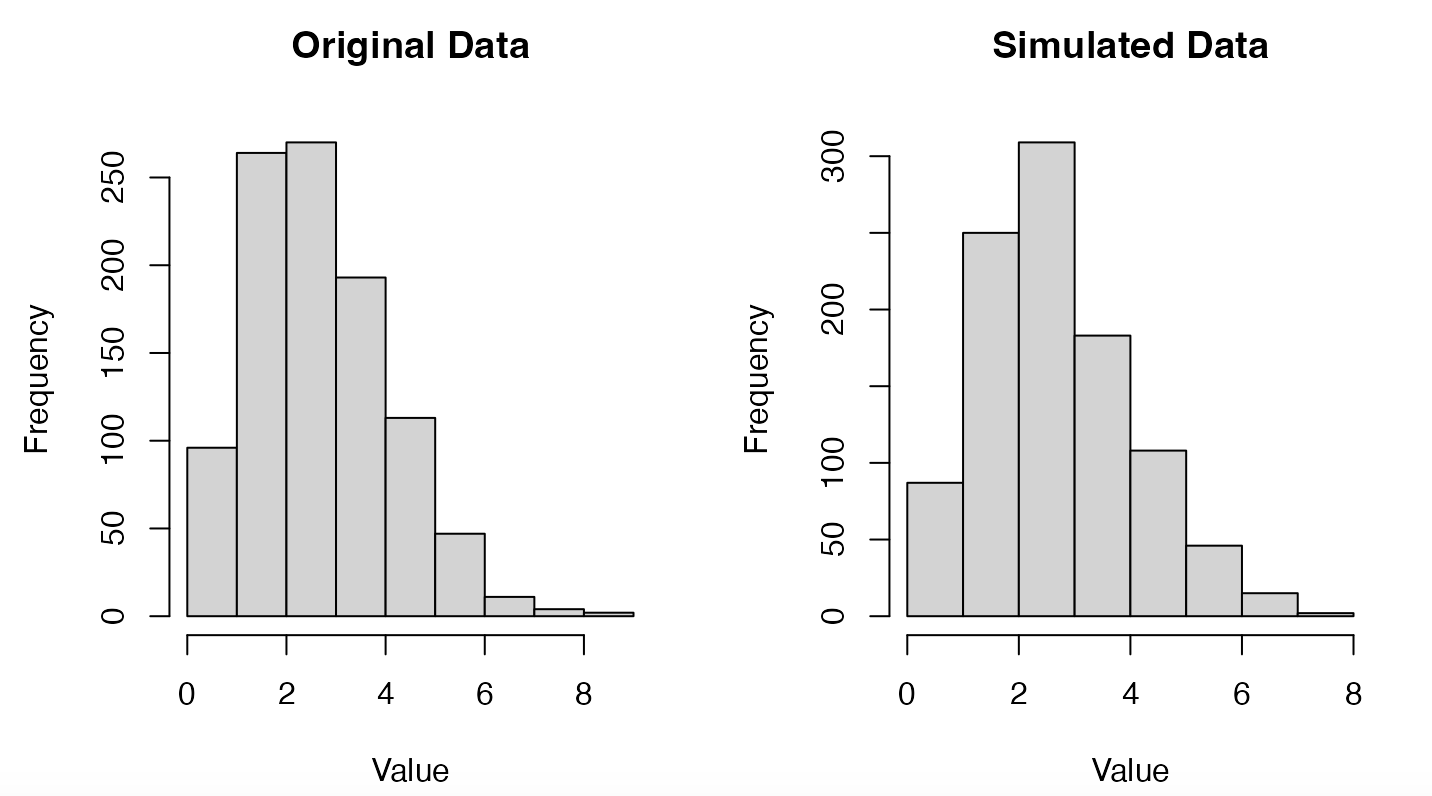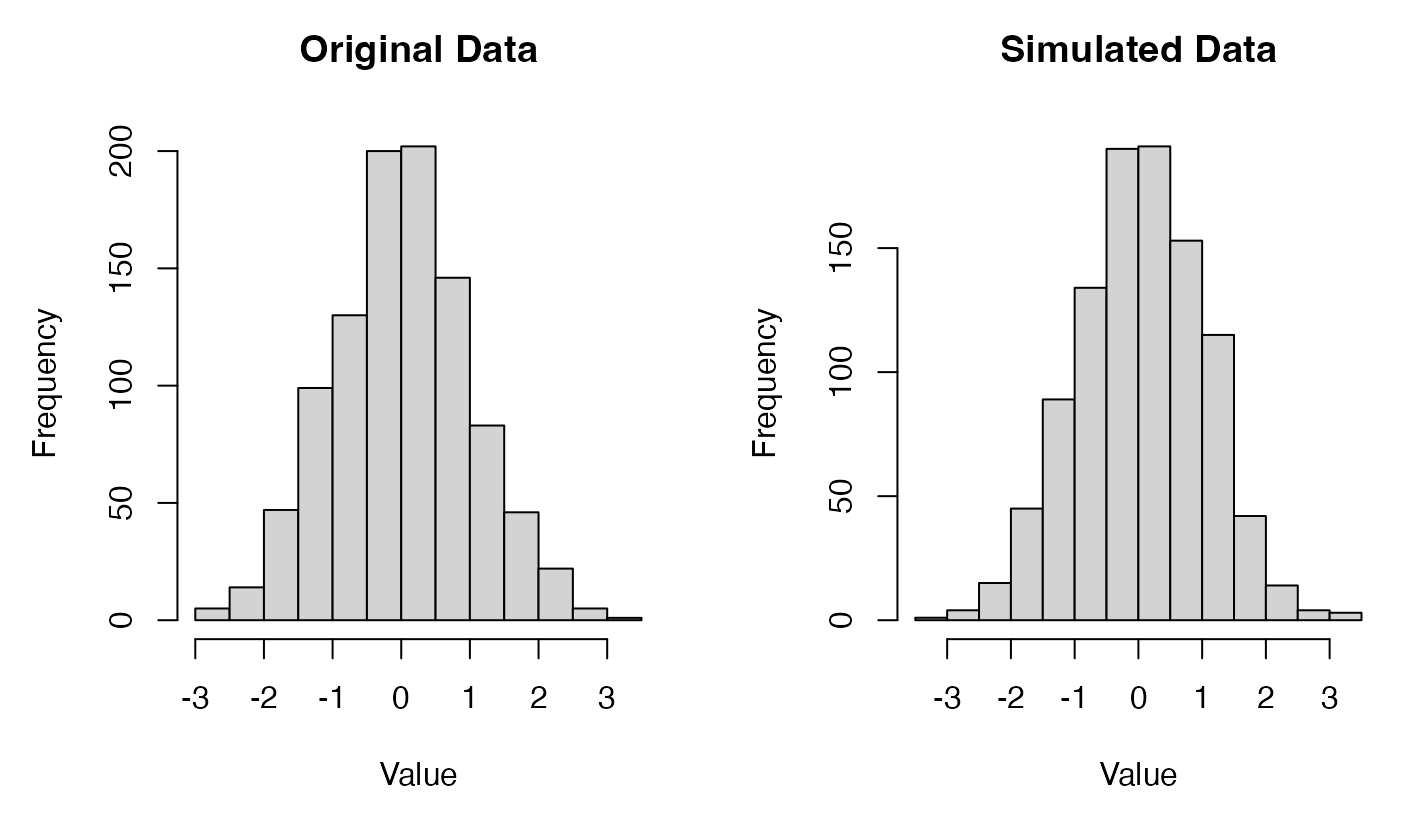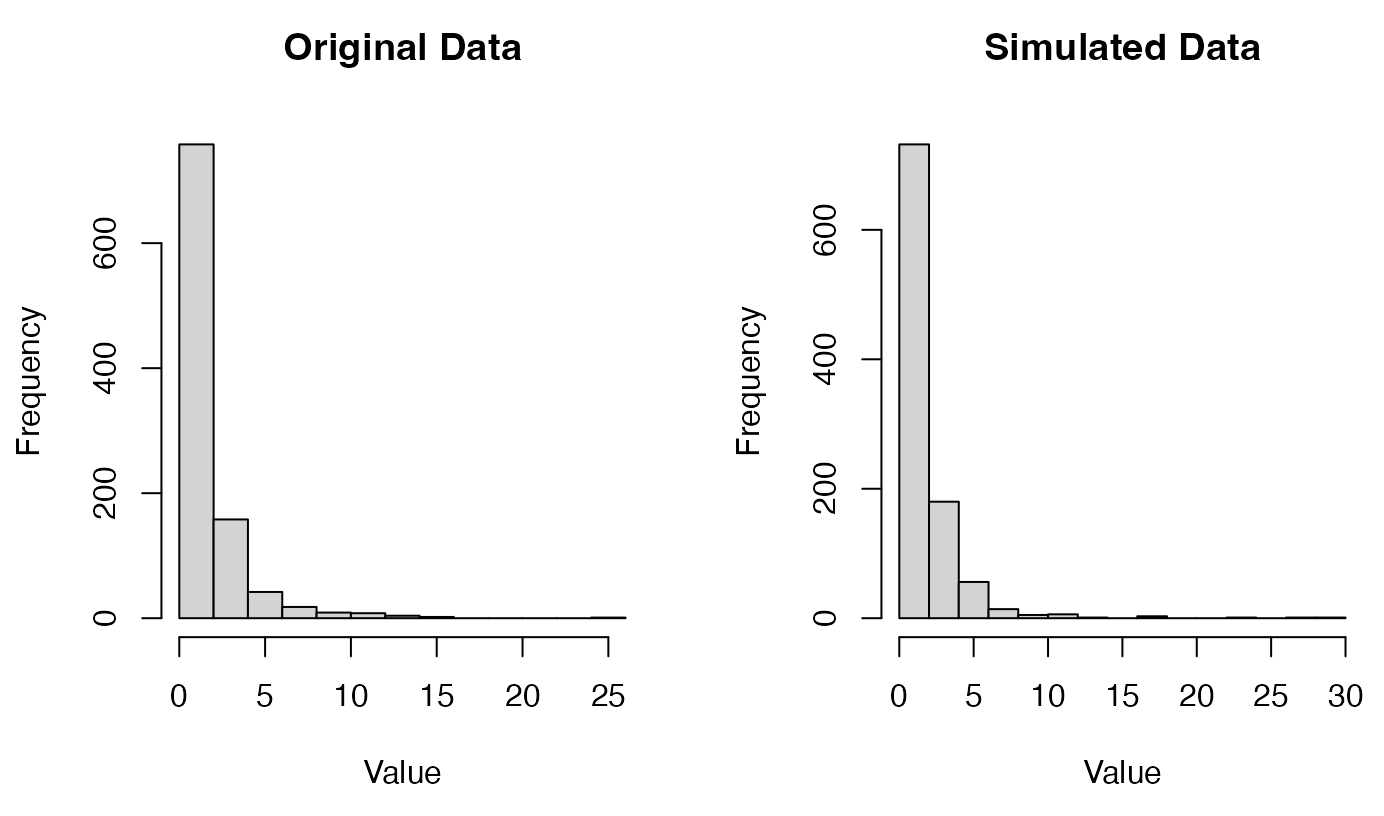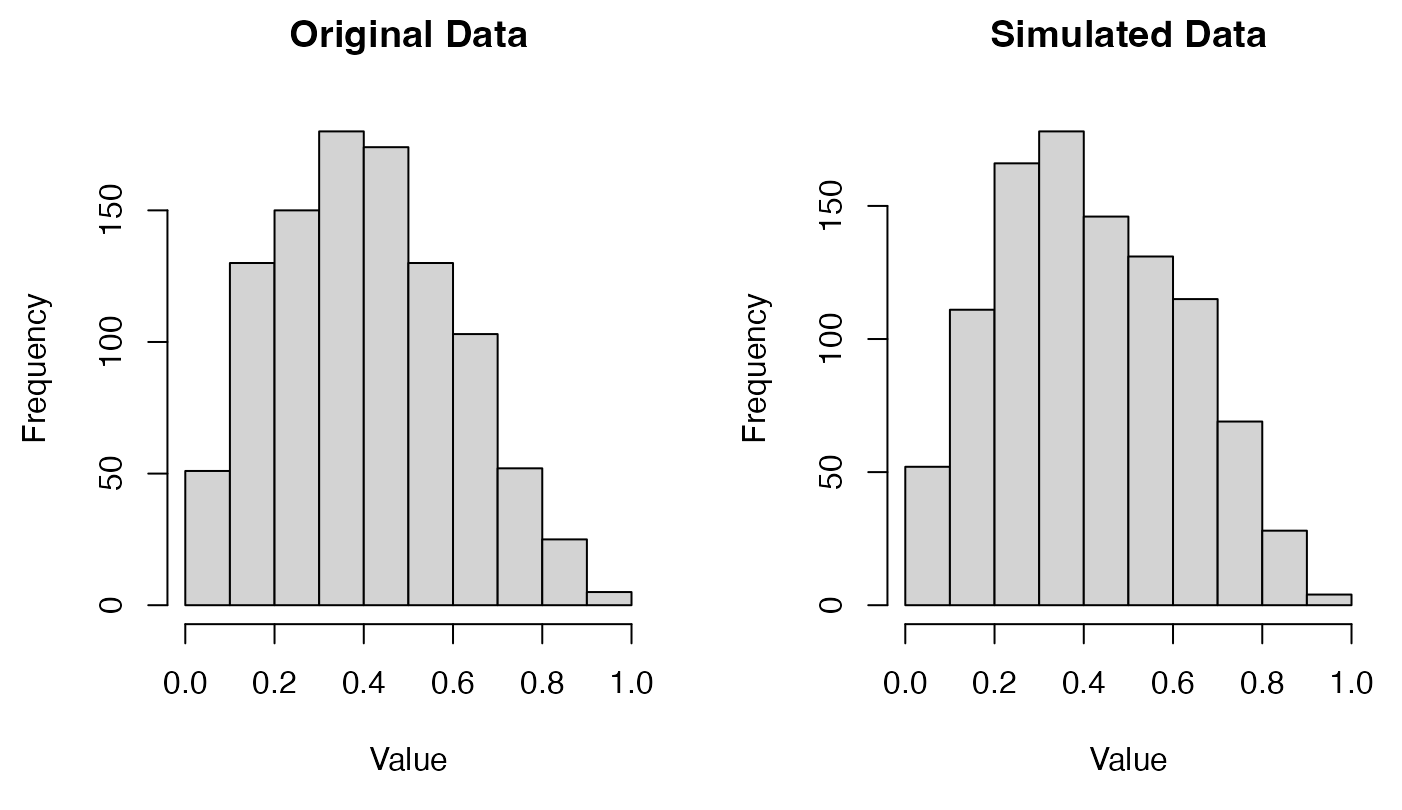Today, give a try to Techtonique web app, a tool designed to help you make informed, data-driven decisions using Mathematics, Statistics, Machine Learning, and Data Visualization. Here is a tutorial with audio, video, code, and slides: https://moudiki2.gumroad.com/l/nrhgb. 100 API requests are now (and forever) offered to every user every month, no matter the pricing tier.
Another post from R package misc! This time, we’ll see how to fit multiple continuous parametric distributions on a vector of data and simulate best-fitting distribution. Under the hood, misc::fit_param_dist uses a loop of MASS::fitdistr calls and Kullback-Leibler divergence for checking distribution adequacy.
remotes::install_github("thierrymoudiki/misc")
Example usage 1
set.seed(123)
n <- 1000
vector <- rweibull(n, 2, 3) # Replace with your vector
start <- proc.time()[3]
simulate_function <- misc::fit_param_dist(vector)
end <- proc.time()[3]
print(paste("Time taken:", end - start))
simulated_data <- simulate_function(n) # Generate 100 samples from the best-fit distribution
par(mfrow = c(1, 2))
hist(vector, main = "Original Data", xlab = "Value", ylab = "Frequency")
hist(simulated_data, main = "Simulated Data", xlab = "Value", ylab = "Frequency")

Example usage 2
set.seed(123)
n <- 1000
vector <- rnorm(n) # Replace with your vector
start <- proc.time()[3]
simulate_function <- misc::fit_param_dist(vector)
end <- proc.time()[3]
print(paste("Time taken:", end - start))
simulated_data <- simulate_function(n) # Generate 1000 samples from the best-fit distribution
par(mfrow = c(1, 2))
hist(vector, main = "Original Data", xlab = "Value", ylab = "Frequency")
hist(simulated_data, main = "Simulated Data", xlab = "Value", ylab = "Frequency")

Example usage 3
# Example usage 1
set.seed(123)
n <- 1000
vector <- rlnorm(n) # Replace with your vector
start <- proc.time()[3]
simulate_function <- misc::fit_param_dist(vector)
end <- proc.time()[3]
print(paste("Time taken:", end - start))
simulated_data <- simulate_function(n) # Generate 1000 samples from the best-fit distribution
par(mfrow = c(1, 2))
hist(vector, main = "Original Data", xlab = "Value", ylab = "Frequency")
hist(simulated_data, main = "Simulated Data", xlab = "Value", ylab = "Frequency")

Example usage 4
set.seed(123)
n <- 1000
vector <- rbeta(n, 2, 3) # Replace with your vector
start <- proc.time()[3]
simulate_function <- misc::fit_param_dist(vector, verbose=TRUE)
end <- proc.time()[3]
print(paste("Time taken:", end - start))
simulated_data <- simulate_function(n) # Generate 1000 samples from the best-fit distribution
par(mfrow = c(1, 2))
hist(vector, main = "Original Data", xlab = "Value", ylab = "Frequency")
hist(simulated_data, main = "Simulated Data", xlab = "Value", ylab = "Frequency")

Bonus: You can develop a package at the command line, by putting this file in the root directory of your package, and typing make or make help at the command line. Here’s the Makefile:


Comments powered by Talkyard.